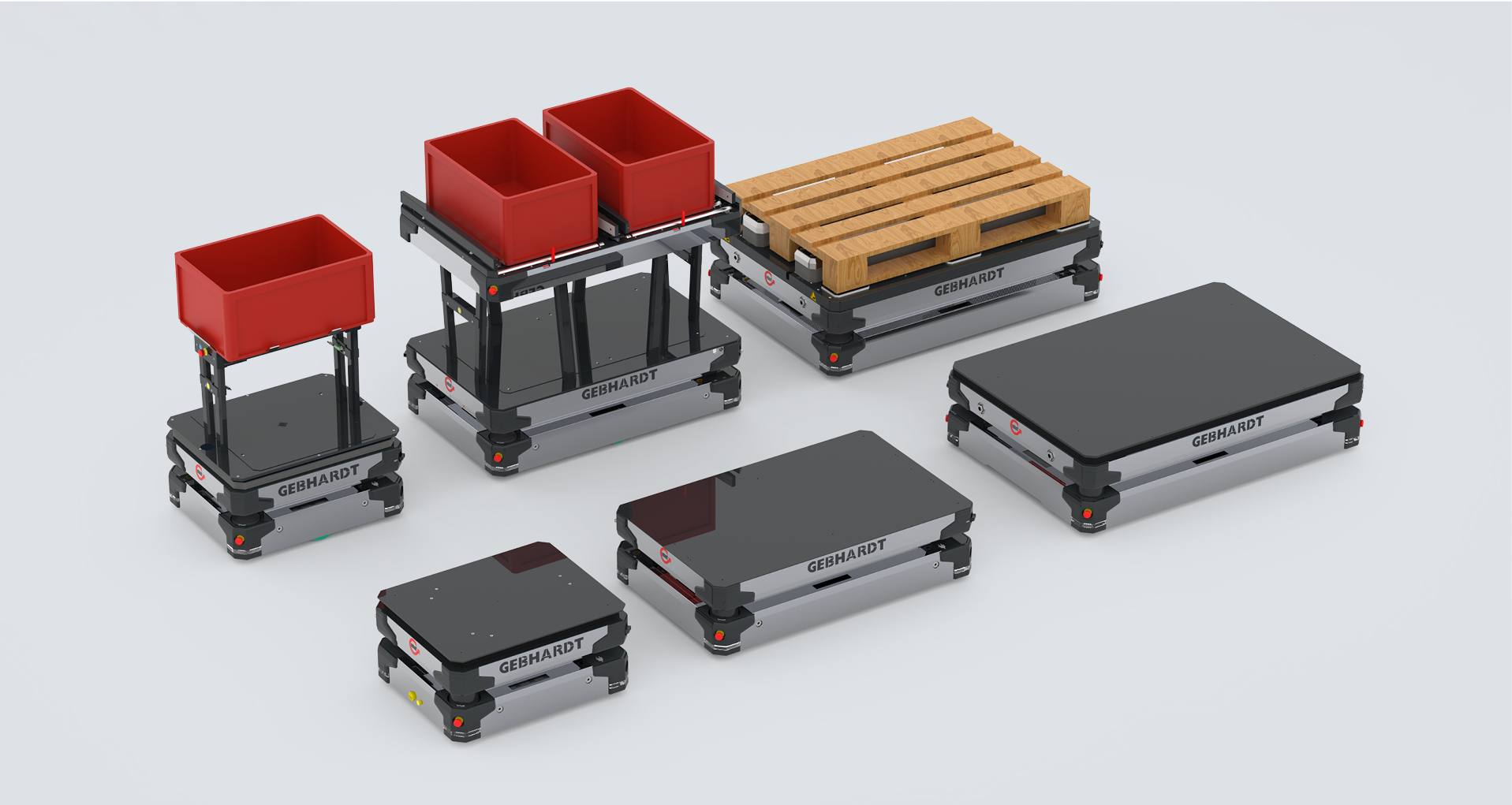Next-level manufacturing with automated intralogistics: advantages of interlinked automation from warehouse to production with AMRs
Automation in production environments has undergone a remarkable development in recent years. In particular, integrating automated intralogistics systems such as autonomous mobile robots (AMRs), for example GEBHARDT KARIS®, has ushered in a new manufacturing era. This opens the possibility of entirely rethinking material flows with immense flexibility. In this blog post, we will explore the advantages of automation in infeed and outfeed areas and production environments. We will examine how it enables continuous production supply, transparency, traceability, KPI generation, adaptability, and efficiency gains.
Continuous production supply
Continuous production supply is critical for the smooth operation of production and manufacturing facilities. Automated intralogistics systems, particularly AMRs, enable the timely and efficient delivery of materials and components to the required locations based on demand (pull principles). This reduces production interruptions to a minimum, increases flexibility and adaptability based on changing environmental parameters, and allows the company to "breathe" within its personnel and production resources, resulting in higher productivity.
Increased transparency
The automation of production environments enables unprecedented transparency. Companies can monitor the current status of their material flows and stock levels in real-time using key figures and, if necessary, make adjustments at short notice (control loop principle). This considerably simplifies and accelerates production planning and coordination and helps to avoid wasted resources, bottlenecks, and excess stock. Transparency can enhance agility to a great extent, depending on the level of automation.
Seamless traceability of material flows
The traceability of material flow is crucial for quality assurance and production traceability. Automated intralogistics systems enable the precise tracking of each individual part and its path through the production system. This is especially valuable in industries with strict regulatory requirements. It also supports future planning by analysing past "lessons learned".
KPI generation
Automation in production environments enables the generation of key performance indicators (KPIs) based on process data. Companies can use dashboards and heatmaps to visualise process data on material demand peaks to identify seasonal or graphical patterns or to identify and then adjust or eliminate disruptive variables, leading to more stable processes and material flows. These insights are invaluable for planning and optimising closely interlinked logistics and production.
Material just-in-time and reduction of circulating material
By automating the provision of materials at the workstation (WP) in connection with the storage system, the concept of "just-in-time" (JIT) becomes a reality. This reduces the need for circulating material and corresponding buffer areas and minimises storage costs and waste of resources. The material is available precisely when it is needed. It is possible to respond to sudden changes in demand in a short period of time without incurring significant costs.
Increased efficiency and shop floor safety
Automated intralogistics systems significantly reduce the distances employees must walk. This improves efficiency, eliminates waste, and increases shop floor safety. Fewer manual transportation tasks mean fewer risks of accidents and injuries.
Conclusion
Automated intralogistics, such as intrinsically safe AMRs, offer numerous benefits for production environments. From continuous production supply to increased transparency and traceability, from generating KPIs to boosting efficiency and increasing shop floor safety, automation is revolutionising how companies produce. Companies that invest in these technologies are not only able to operate in a more cost-efficient and agile way but are also able to ensure their competitiveness in an increasingly demanding production landscape through their adaptability. It's time to take manufacturing to the next level and reap the benefits of automated intralogistics.

